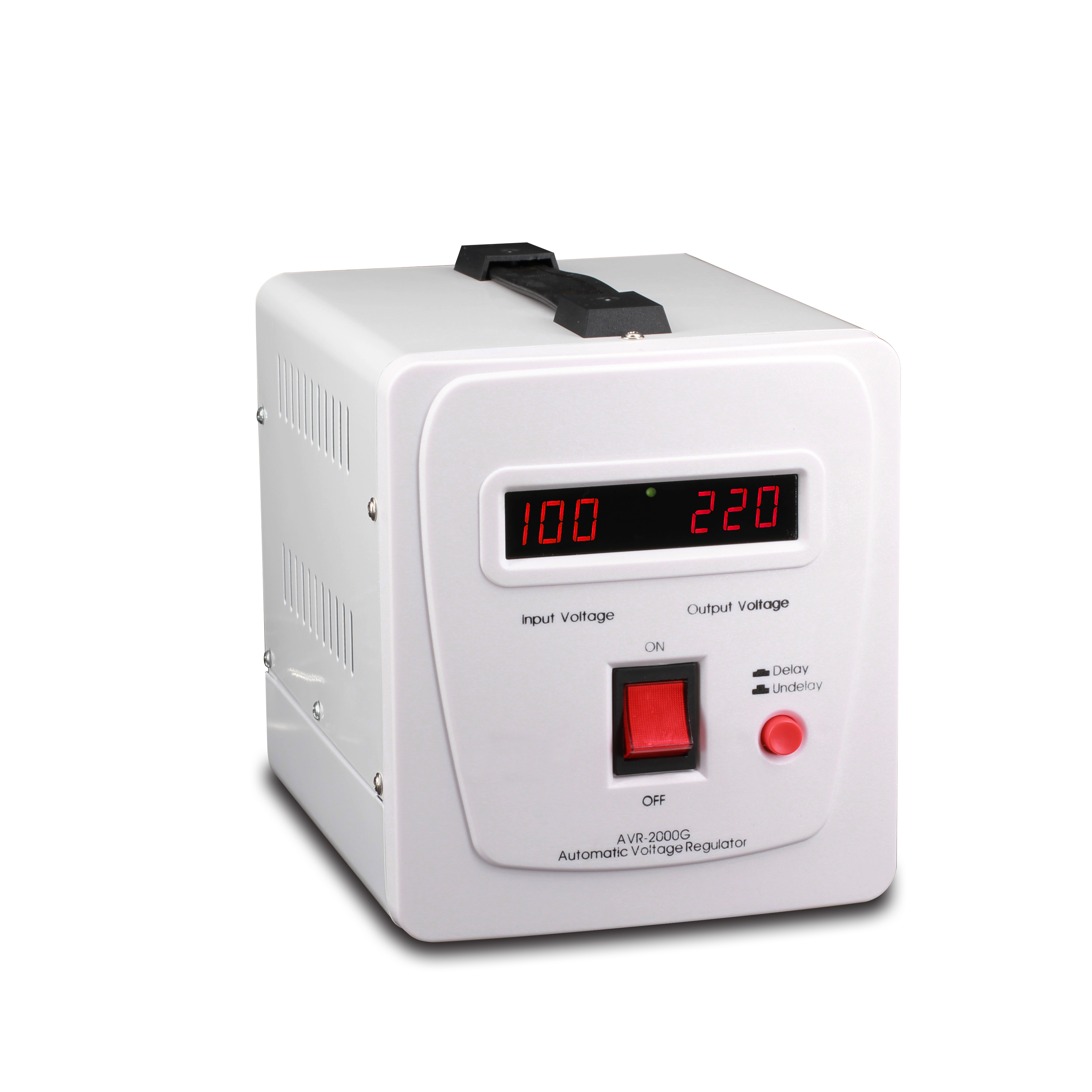single-phase voltage stabilizer for home: automatic voltage stabilizer for home use
The voltage stabilizer is composed of a voltage regulating circuit, a control circuit, and a servo motor. When the input voltage or load changes, the control circuit samples, compares, and amplifies, and then drives the servo motor to rotate to change the position of the carbon brush of the voltage regulator. By automatically adjusting the coil turns ratio, the output voltage is kept stable. The voltage regulator with larger capacity also works on the principle of voltage compensation.
Because some electrical appliances contain coil components, eddy currents that hinder the current will be generated at the initial stage of energization. The generation of eddy currents will not only weaken the instantaneous voltage when the appliance is started, resulting in a slow startup, but also strengthen the instantaneous voltage generated after the circuit breaker, which may cause spark damage Circuit. At this time, a voltage regulator is needed to protect the normal operation of the circuit.
AC stabilized power supply is based on the output apparent power (kVA) as the nominal rated capacity, and in general, the load is not purely resistive bai, that is, the power factor COS¢≠1, the actual active power kW that the regulator can output = Capacity (kVA)×COS¢.
Therefore, in the actual selection, the regulated power supply should be reasonably selected according to the specific conditions of the electrical equipment's rated power, power factor, and load type, and its output power should be left with a proper margin, especially for the impact load selection. To be bigger. Load nature, equipment type, safety factor, select the capacity of stabilized power supply.

relay type avr: automatic voltage stabilizer for home use
In the environment of large inductive and capacitive loads (such as motors, computers), the starting current of the load should be considered when selecting the type is particularly large (up to 5-8 times the rated current), so the capacity of the voltage stabilizer should be selected according to the load power 2.5~3 times. Pure resistive load Incandescent lamp, resistance wire, electric furnace, and other equipment 1.25~1.5 1.25~1.5 times the total load power. Inductive and capacitive load Fluorescent lamps, fans, motors, water pumps, air conditioners, computers, refrigerators, etc. 2 ~ 3 ≥2~3 times the total load power.
Auto-coupling regulator (single-phase 0.5kVA~3kVA, 10k horizontal and below, three-phase 9kVA and below) when the input phase voltage is lower than 198V, the output capacity begins to drop; when the input phase voltage is equal to 160V, it drops to 50% of the rated capacity of the regulator. Therefore, at the low end of the power supply voltage, special attention should be paid to reducing the load and derating to avoid overloading and burning the voltage stabilizer;
The auto-coupling regulator can output two voltages of 220V and 110V at the same time. But even when the output is all 110V, the load of the regulator cannot exceed 50% of the rated capacity, otherwise, it is overloaded.